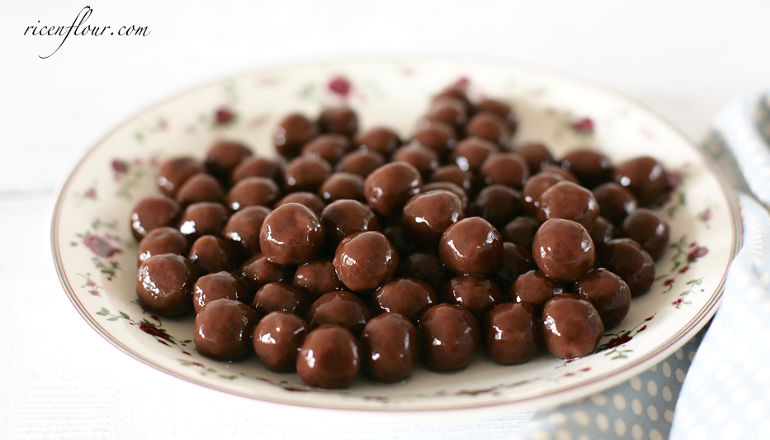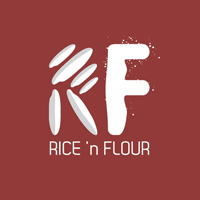FOREWARNING: This post is really going to indulge the inner child inside you.
‘Soft cheese jelly’? No – you’re not reading it wrong. You are probably having the same reaction I had last summer, when I came back to Hanoi over the school holiday and was introduced by my friends to this new ‘sensational’ delicacy: fruit jelly with a cream cheese filling. My first thought – curiosity – because I love all kinds of cheese; second thought, ‘Vietnamese street food vendors are amazingly creative’. ‘Soft cheese jelly’ is sweet, therefore it is served with sweet drinks (like bubble tea) or sweet dessert soup with coconut milk (chè).
To be honest, I was a bit disappointed at first, saddened at the less-than-expected amount of cheese inside the jelly. But it was a very fun experience for my taste bud: the creaminess and tanginess of the cheese adds an interesting contrast to the sweetness of the jelly, and another different texture as well. Kids, or your inner child, will absolutely adore this jelly. So, if you’re looking to add a twist to your normal average jelly, ‘soft cheese jelly’ is definitely a recipe to try out. It is only one extra step while you make your regular jelly anyway!
We’ve got the ‘soft cheese jelly’ bit sorted, now let’s turn to the ‘bubble tea’. Bubble tea in Asia is like Starbucks in the West: it is ‘cool’ and trendy, and teenagers cannot seem to live without it. I usually have plain tea without any milk or sugar, but if I want a milky sweet tea, it has to be ice cold, and there have to be tapioca pearls – those fun chewy little balls – in it. Making milk tea is simple enough, and tapioca pearls can be found in most Asian groceries stores. But if you can make the pearls from scratch, why not ? Making tapioca pearls is not difficult at all – imagine playing with Play-Doh. Moreover, I find that doing things yourself produces much more rewarding and satisfying results, experimenting with different flavours and combinations. Plus, you can control its quality and what you add into it better, which is very important when it comes to food and what you put inside your body.
One last thing, jumbo straws are essential, in order to get all those pearls and jelly goodies in one slurp of tea. So, are you ready to prepare the best summer drink you will ever make?

BUBBLE TEA RECIPE
INGREDIENTS
A. The Soft Cheese Jelly
- 1 box of Laughing Cow triangle cheese/square cheese
- 150 ml (2/3 cup) freshly brewed coffee
- 150 ml (2/3 cup) orange juice / passionfruit juice
- 150 ml (2/3 cup) water mixed with pandan extract
- 150 ml (2/3 cup) water mixed with strawberry syrup
- 2 tsp agar powder or jelly powder
- Sugar, to taste (about 20 – 30 grams for each portion of water)
B. The Milk Tea
- 6 bags of black tea or green tea
- 1.2 litres (about 5 cups) boiling water
- 100 grams (3.5 oz.) sweetened condensed milk
- 1 tbsp milk powder (optional)
- Sugar, to taste
C. The Tapioca Pearls
- 90 grams (3/4 cup) tapioca starch
- 10 grams (1 Tbsp) rice flour
- 15 grams (2 Tbsp) cocoa powder
- 20 grams (1.5 Tbsp) caster sugar
- 70 – 80 ml (1/3 cup) boiling water
INSTRUCTIONS
Detailed step-by-step instructions and notes can be found in the video in Savoury Days’ YouTube channel (don’t forget to sign up and subscribe to receive the latest notifications as soon as our videos come out). You can watch below or at this link.
Don’t forget to select HD to view the video with the best definition and quality 
PRINTABLE RECIPE
A. The Soft Cheese Jelly
1. Put the coffee, strawberry-flavoured water, passionfruit juice/orange juice and pandan-flavoured water into individual bowls. Dissolve ½ tsp agar powder into each bowl and leave them for a minimum of 1 hour so that the agar powder has time to activate. This will help the jelly set completely without ‘leaking’ any water.
* Note:
– All of the liquid used to make jelly must be at room temperature or chilled when the agar powder is mixed into them.
– You can use different types of liquid/juices to make different flavours of jellies.
- For coffee jelly, I usually mix 75 ml concentrated black coffee, or Vietnamese filter coffee, with 75 ml water. I like my coffee jelly like I like my coffee: strong and aromatic.
- For strawberry jelly, I mix 45 ml homemade strawberry syrup with water. Recipe for homemade strawberry syrup will be shared soon on Rice ‘n Flour.
- For pandan jelly, you can add a bit of green food colouring for enhance the jelly colour. Instead of using pandan extract, if possible, you can use the juice from fresh pandan leaves.
Compared to gelatine, agar powder gives your jellies a ‘crunchier’, more crumbly and flaky texture. If you want your jellies to be a bit more soft and chewy, use gelatine, Jell-O or other jelly powders instead. Follow the instruction on the package for the recommended ratio of powder : liquid.
2. Cut the soft cheese into bite-sized pieces, if you are using the Laughing Cow triangle wedges. Put each cube of cheese into every hole of the ice cube tray/mould. If you don’t have any ice trays or moulds, place the cheese cubes into a square box/tray instead, about 1.5 – 2 cm between each other.
3. Pour the liquid jelly into a saucepan and boil it on high heat. Stir continuously while boiling. When the liquid starts bubbling and you can see steam coming out, remove the saucepan off the heat – the agar powder has completely dissolved at this point. Add sugar to taste and stir to dissolve.
4. Pour the liquid into the tray. Remove any foams on the surface of the jelly. Any leftover liquid jelly can be used to make plain jellies instead of ‘soft cheese jellies’.
Repeat these steps if you are making more than one type of jellies.
5. Leave the jelly trays at room temperature until they are completely cool. Then, put them into the fridge to set for about an hour.
B. The Milk Tea
1. Put the tea bags into a large jug/container/pitcher. Pour in freshly boiled water and brew the tea.
2. After the tea is brewed for 5 ~ 7 mins and while it is still hot, stir in the sweetened condensed milk. You can adjust the amount of condensed milk to your liking, but don’t add too much or you will lose the tea flavour. Usually, I prefer to add about 1 Tbsp milk powder in addition to the condensed milk. The milk powder gives the tea a sweet, milky and creamy flavour, but not as overpowering as if you use condensed milk.
3. Add sugar to taste and stir to dissolve. When the tea is cooled completely, chill it in the fridge until use.
C. The Tapioca Pearls
1. Mix the tapioca starch and the rice flour into a bowl. Set aside about 1 – 2 tbsp (10 – 20 grams) of flour to use for coating later.
2. Sieve the cocoa powder and the sugar into the bowl. Mix until completely blended.
3. Slowly pour the freshly boiled water into the bowl, stirring continuously as you are pouring. When the flour and water form into a dough, stop adding water. Let the dough cool to touch, then knead it gently with your hands. Dust your hands with flour or add more flour if the dough is too sticky, using the coating flour from step 1. Knead until the dough is elastic and no longer sticks to your hands.
* Note:
- It is essential that the water is freshly boiled. If the water is not hot enough, your dough will not hold its shape and turn into a sloppy mess.
- The amount of water can vary from time to time. Therefore, add the water slowly and carefully while stirring, and stop once you can see a dough start forming. However, don’t worry if you accidentally add too much water. Just add in a bit more tapioca starch until the dough is no longer sticky.
- The rice flour will help to ‘harden’ the pearls and give them a more chewy and crunchy texture. You can make tapioca pearls without or using less rice flour, if you like your pearls to be a bit softer.
4. Form small balls – about 0.8 – 1 cm diameter – from the dough. Dust your hands with a bit of tapioca starch while doing this so that the pearls won’t stick.
5. Boil a large saucepan of water. When the water is on a rolling boil, add in all your pearls. After 2 – 3 minutes, the pearls will start to float to the surface of the water. Reduce the heat to medium and keep boiling for 40 – 60 seconds before taking the pearls out into a bowl of hot water. Leave the pearls in hot water for 5 ~ 7 minutes then transfer them to a bowl of water at room temperature. This helps the tapioca pearls stay soft, chewy and crunchy longer even after being added into the cold milk tea.
* Note:
– Boiled tapioca pearls can be kept in the bowl of water at room temperature and used within the day. DON’T put them into the fridge as the pearls will get hardened. Similarly, DON’T put the pearls into the tea and leave them in the fridge for hours as it will make the pearls hardened.
– If you want to keep the boiled tapioca pearls overnight, get them out of the water. Keep them in air-tight containers in the fridge. Cook them again with boiling water as in step (5) when you want to use them.
– You can make tapioca pearls with different custom-made flavours based on this recipe – this is the biggest bonus of making your own tapioca pearls at home:
- Matcha tapioca pearls: substitute cocoa powder with matcha powder.
- Strawberry tapioca pearls: add 1 – 2 Tbsp strawberry syrup into the water before you boil it. You can also add some extra red food colouring for more vibrant red pearls.
D. To Serve
1. Remove the soft cheese jelly from the mould, or cut it into small bite-sized pieces if you’re using a large box as the mould.
2. Add the tapioca pearls and the jelly into a glass. Fill the glass with milk tea. Best serve cold with a jumbo straw.
——-
- Recipe and video by Linh Trang
- Written and Edited by Thảo Đan




JOIN US